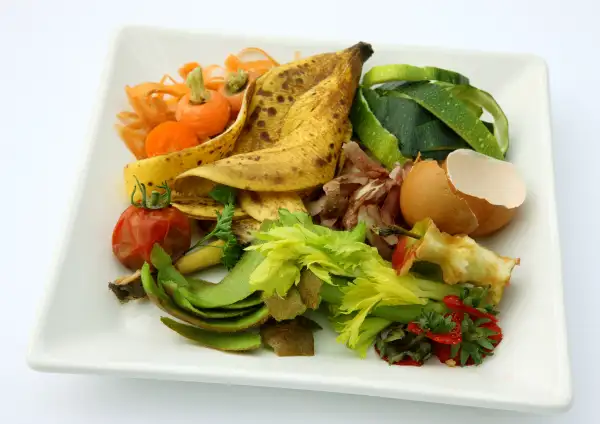The Hip New Foodie Trend Could Be Eating Garbage

For the second half of March, Manhattan's Blue Hill restaurant—renowned chef Dan Barber's swanky farm-to-table experience described as "flawless" and a "top destination" in Zagat—was closed to make space for a pop-up experiment called wastED. The "waste" sums up what was on the menu, which consisted entirely of things that are usually considered inedible rubbish, including salad scraps, pasta trimmings, off-grade sweet potatoes, "yesterday's oatmeal," and seemingly unpalatable parts of meat and fish like skate-wing cartilage. Naturally, the latter was paired with fish-head tartar sauce. A dish dubbed "dog food," which indeed looked just like dog food, was actually meatloaf made with offal (animal organs) and beef from a cow bred for milking.
A plate of food cost a flat $15. That could seem like a bargain considering people were eating in a chic, experimental, brag-worthy West Village restaurant. Then again, the price could be viewed as a total rip-off in light of the fact that diners were basically eating garbage.
As the pop-up restaurant's name indicates, the emphasis was on ED, as in education. The point was to call attention to food waste. It's been estimated that somewhere between 25% and 40% of perfectly edible food winds up in the trash, and the goal of Barber and his team of guest chefs was "creating something delicious out of the ignored or un-coveted."
This isn't a new concept for Barber, who a year ago wrote in TIME about the need for restaurants and society at large to "cook with the whole farm" rather than just the prime cuts, so to speak. Silicon Valley entrepreneurs have also pointed out that food waste is ripe for profit, what with the potential to turn cheap or free discarded materials into products that can be sold.
For the most part, the reviews were positive—if not concerning the food, then at least the idea. The New Yorker declared the bony monkfish meat to be "juicier than even the best fried chicken," and that overall, "Ordering horrible-sounding things that turned out to be delicious was a bizarre but exhilarating adventure." Architectural Digest noted that the décor consisted of repurposed and discarded materials, resulting in the overall effect of "having dinner in an extremely chic construction site, albeit one with perfect mood lighting that’s enhanced by beef tallow candles." A Fast Company writer had fun ordering "dishes that sounded like blue plate specials for Oscar the Grouch," though ultimately admitted she wouldn't actively seek out anything that was on the menu.
"I don't believe I've ever been in a Manhattan restaurant where so many people appeared so enthralled, so thrilled," wrote GQ's Alan Richman. Even so, Richman expressed concern that wastED reminded him of the "inhumane fashion trend of a decade ago called 'homeless chic,' whereby designers created pricy fashions for wealthy people that resembled what bag ladies wore on the street."
There's something insulting about the idea of privileged people pretending to be dumpster-diving paupers for an evening. There's also something hypocritical about rich foodies who wouldn't dream of taking doggie bags home from a restaurant but who would brag about eating "dog food" when it's created by a celebrity chef.
The New Republic also critiqued one aspect of the wastED experiment, which when you think about it demonstrates how pathetic most of us are at cooking:
The message a restaurant like this sends is that the world’s great chefs can do more with vegetable scraps than home cooks can with prime cuts of meat and high-quality produce.
For home cooks hoping to eliminate waste, it's wise to take the baby-steps approach rather than ambitiously attempting to make fermented scallion tops or pig's ears edible. Try to buy only what you're going to use, be smart about storing and freezing foods that would otherwise be thrown away, and get creative when it comes to leftovers.
